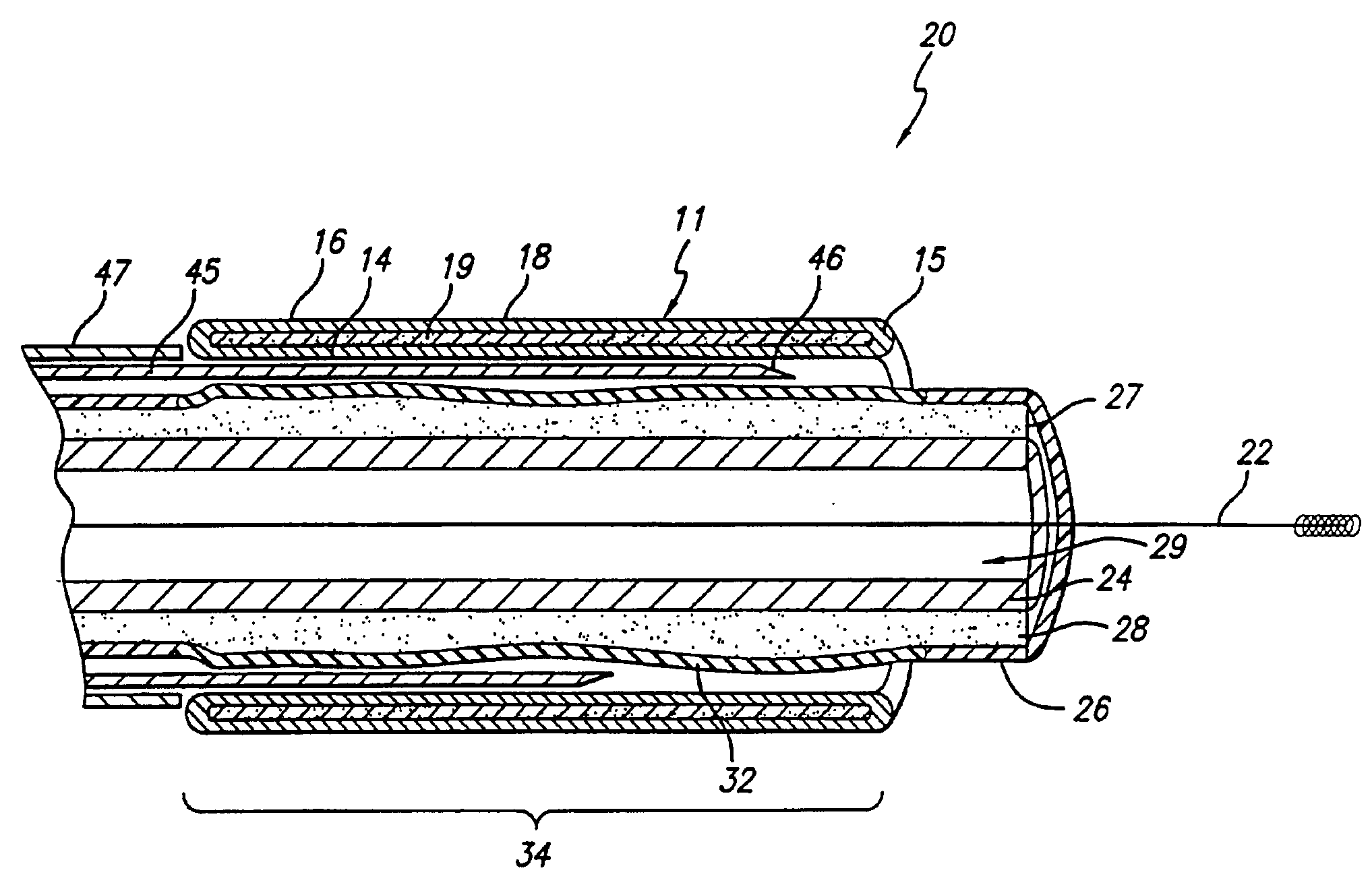Two stage light curable stent and delivery system
- Summary
- Abstract
- Description
- Claims
- Application Information
AI Technical Summary
Benefits of technology
Problems solved by technology
Method used
Image
Examples
Embodiment Construction
Expandable stents are well known to those in the art. There exists a wide variety of configurations for implanting in human vessels. Some stents are delivered in a compressed form and self expand upon removal of a compression sheath. Others are known to expand plastically after expansion by a dilation balloon. Still others have been known to expand elastically by force from a dilation balloon and thereafter assume an expanded configuration by transformation of materials inside the stent. The subject of the present invention is directed to this latter stent technology.
The present invention discloses and includes an expandable stent that encapsulates a light curable resin in its wall, that when exposed to light, transforms the resin to a hardened state. The resin is further hardened by exposure to body fluids that enter through the sieve-like stent wall.
The enclosed resin in the stent wall is in a fluid state when introduced into the body cavity. The fluid state of the resin enhances ...
PUM
 Login to View More
Login to View More Abstract
Description
Claims
Application Information
 Login to View More
Login to View More - R&D
- Intellectual Property
- Life Sciences
- Materials
- Tech Scout
- Unparalleled Data Quality
- Higher Quality Content
- 60% Fewer Hallucinations
Browse by: Latest US Patents, China's latest patents, Technical Efficacy Thesaurus, Application Domain, Technology Topic, Popular Technical Reports.
© 2025 PatSnap. All rights reserved.Legal|Privacy policy|Modern Slavery Act Transparency Statement|Sitemap|About US| Contact US: help@patsnap.com



